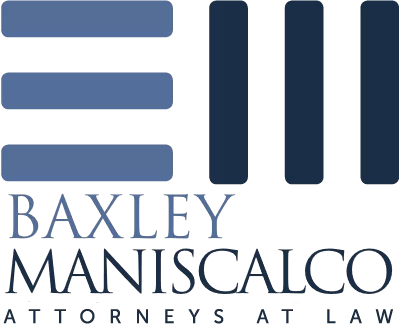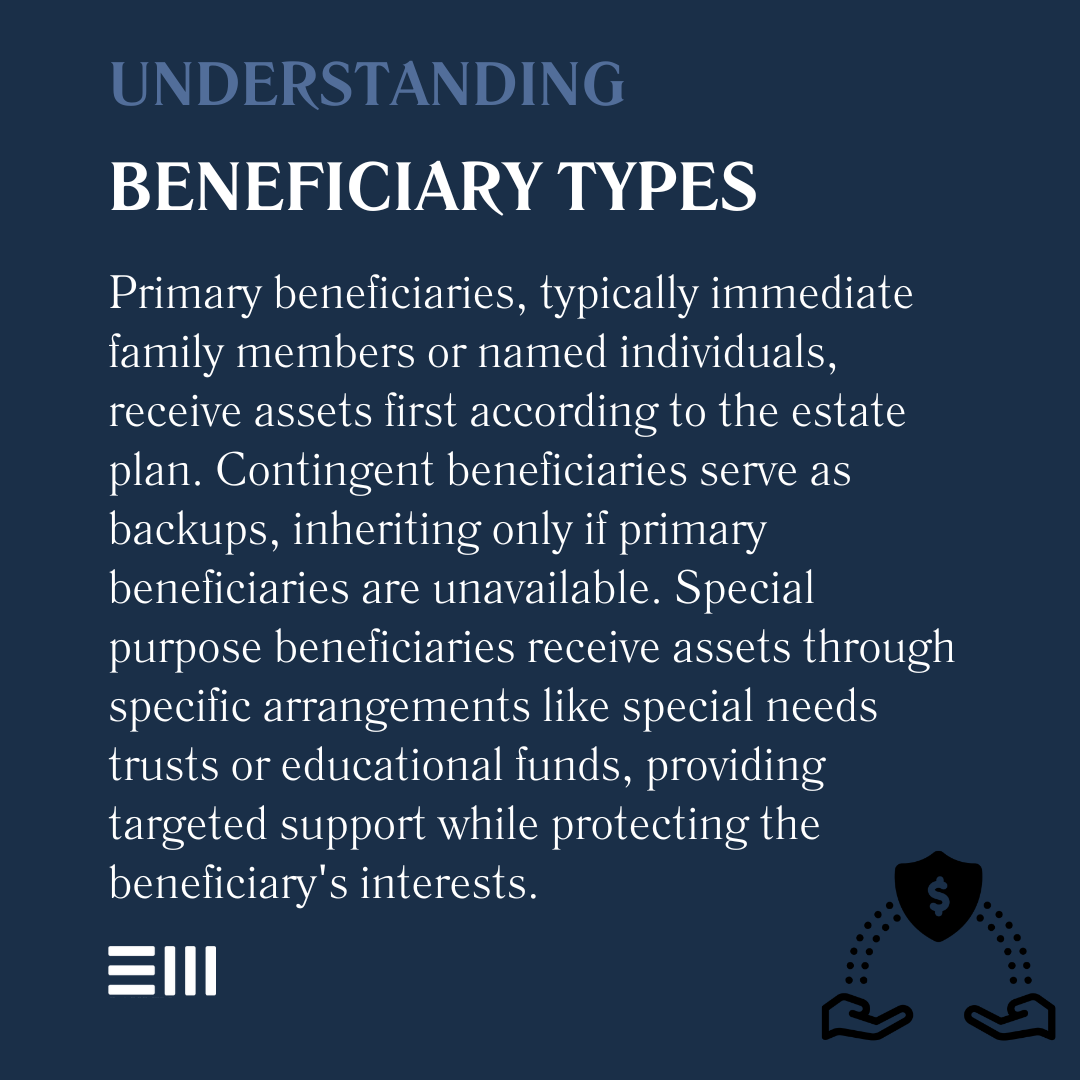Each year, over $70 billion in unclaimed inheritance assets sit in state treasuries, primarily due to improperly named or outdated beneficiary designations.
While 68% of Americans believe leaving an inheritance is important, only 46% have properly documented their wishes.
These overlooked details can leave families facing years of legal complications instead of receiving their intended inheritance.
Understanding Beneficiary Designation
Naming beneficiaries goes beyond simply listing names in a document. Modern estate planning requires careful consideration of various factors to ensure your wishes are carried out effectively.
Proper beneficiary designation helps protect your legacy and your loved ones' interests, from tax implications to special needs considerations.
Creating clear, legally sound beneficiary designations helps prevent family conflicts and ensures efficient asset distribution. Understanding key principles and common pitfalls forms the foundation for effective estate planning decisions.
Types of Beneficiaries
Estate planning allows for different types of beneficiaries to accommodate various situations and needs.
Each type serves specific purposes in asset distribution planning.
Primary Beneficiaries
- Direct family members like spouse and children;
- Close relatives specified by name;
- Trusted friends or caregivers; and
- Charitable organizations.
Contingent Beneficiaries
- Secondary heirs if primary beneficiaries predecease;
- Alternative charitable organizations;
- Extended family members; and
- Trust arrangements.
Special Purpose Beneficiaries
- Special needs trust beneficiaries;
- Minor children through guardianship;
- Educational trust recipients; and
- Pet trust arrangements.
Understanding these distinctions helps create more effective estate plans that address various scenarios.
Proper Identification Methods
Clear identification prevents confusion and potential legal challenges in asset distribution. Proper documentation requires specific information and careful attention to detail.
Required Information
- Full legal names, including middle names;
- Current addresses and contact details;
- Social security numbers when applicable;
- Date of birth for verification.
Relationship Documentation
- Family relationship descriptions;
- Marriage certificates, if relevant;
- Adoption documentation; and
- Legal guardianship papers.
Alternative Identifiers
- Trust registration information;
- Charity tax identification numbers;
- Business entity details; and
- Institution contact information.
Proper identification helps ensure assets reach intended beneficiaries efficiently.
Special Considerations
Certain situations require additional planning and documentation to protect beneficiaries' interests effectively.
Minor Children
- Guardian appointments;
- Trust establishment requirements;
- Age-based distribution schedules; and
- Education funding provisions.
Special Needs Beneficiaries
- Special needs trust considerations;
- Government benefit protection;
- Care provision arrangements; and
- Trustee selection criteria.
International Beneficiaries
- Foreign asset transfer rules;
- Tax treaty implications;
- Currency conversion provisions; and
- International banking requirements.
These considerations help protect vulnerable beneficiaries while ensuring proper asset distribution.
Common Mistakes to Avoid
Understanding frequent errors helps create more effective beneficiary designations while preventing future complications.
Documentation Errors
- Incomplete identifying information;
- Outdated beneficiary lists;
- Unclear distribution instructions; and
- Missing contingent beneficiaries.
Planning Oversights
- Unintended tax consequences;
- Benefit eligibility impacts;
- Conflicting designations; and
- Family conflict triggers.
Legal Compliance Issues
- State law violations;
- Invalid transfer provisions;
- Improper witness requirements; and
- Missing notarizations.
Avoiding these mistakes helps ensure your wishes are properly executed.
Regular Review and Updates
Life changes require regular beneficiary designation reviews to maintain effectiveness and accuracy.
Life Event Triggers
- Marriage or divorce;
- Birth or adoption;
- Death of beneficiaries; and
- Significant asset changes.
Documentation Updates
- Legal name changes;
- Contact information revision;
- Relationship status changes; and
- Asset allocation adjustments.
Professional Review
- Legal compliance verification;
- Tax impact assessment;
- Distribution efficiency review; and
- Beneficiary confirmation.
Regular reviews help maintain current and effective beneficiary designations.
Tax Implications for Beneficiaries
Understanding tax consequences helps create more effective beneficiary designations that maximize inheritance value.
Different assets and beneficiary types face varying tax treatments that can significantly impact final distributions.
Income Tax Considerations
- Retirement account distributions;
- Deferred compensation arrangements;
- Investment account transfers; and
- Business interest successions.
Estate Tax Planning
- Lifetime gift considerations;
- Marital deduction strategies;
- Generation-skipping implications; and
- State tax compliance.
Tax-Advantaged Transfers
- Charitable giving strategies;
- Life insurance arrangements;
- Educational account transfers; and
- Special needs trust provisions.
Documentation Requirements
- Cost basis records;
- Gift tax returns;
- Estate tax filings; and
- Beneficiary tax notices.
Understanding these tax implications helps create more efficient transfer strategies while minimizing the tax burden on beneficiaries.
Digital Asset Beneficiary Planning
Modern estate planning must address digital assets, from cryptocurrency to social media accounts. Clear designation of digital asset beneficiaries helps ensure proper handling of these increasingly valuable holdings.
Digital Account Types
- Cryptocurrency wallets;
- Social media profiles;
- Online banking accounts; and
- Digital business assets.
Access Documentation
- Password management systems;
- Recovery phrase storage;
- Two-factor authentication procedures; and
- Digital key transfer protocols.
Platform Requirements
- Terms of service compliance;
- Account transfer policies;
- Death notification procedures; and
- Platform-specific regulations.
Security Considerations
- Encryption key management;
- Cold storage arrangements;
- Identity verification protocols; and
- Access limitation provisions.
Digital Legacy Instructions
- Account closure preferences;
- Content preservation guidelines;
- Memorial page instructions; and
- Digital asset distribution plans.
Proper digital asset planning helps preserve and transfer these modern assets effectively while maintaining security.
Frequently Asked Questions About Naming Beneficiaries in Alabama
Understanding beneficiary designation in Alabama involves many considerations.
Here are answers to common questions about the process and requirements.
How Often Should I Review My Beneficiary Designations?
Review beneficiary designations annually and after major life events like marriage, divorce, births, or deaths in the family.
Can I Name Multiple Beneficiaries for One Asset?
Yes, you can name multiple beneficiaries and specify percentage allocations for asset distribution.
What Happens if a Beneficiary Dies Before Me?
Without contingent beneficiaries, that portion may pass through probate or to other named beneficiaries, depending on your documentation.
How Do I Protect Benefits for Special Needs Beneficiaries?
Special needs trusts help preserve government benefit eligibility while providing supplemental support.
Can I Name My Estate as Beneficiary?
While possible, naming your estate may have tax implications and subject assets to probate delays.
What Documents Override Beneficiary Designations?
Certain contracts like life insurance policies typically override will provisions for beneficiary designation.
Secure Your Legacy Today
Your estate plan represents more than asset distribution—it's your final message to loved ones and your lasting impact on their lives.
Our experienced estate planning team understands the complexities of beneficiary designation and helps ensure your wishes are properly documented and legally sound.
Contact us today to review your beneficiary designations and create a comprehensive plan that protects your legacy and your loved ones' futures.


